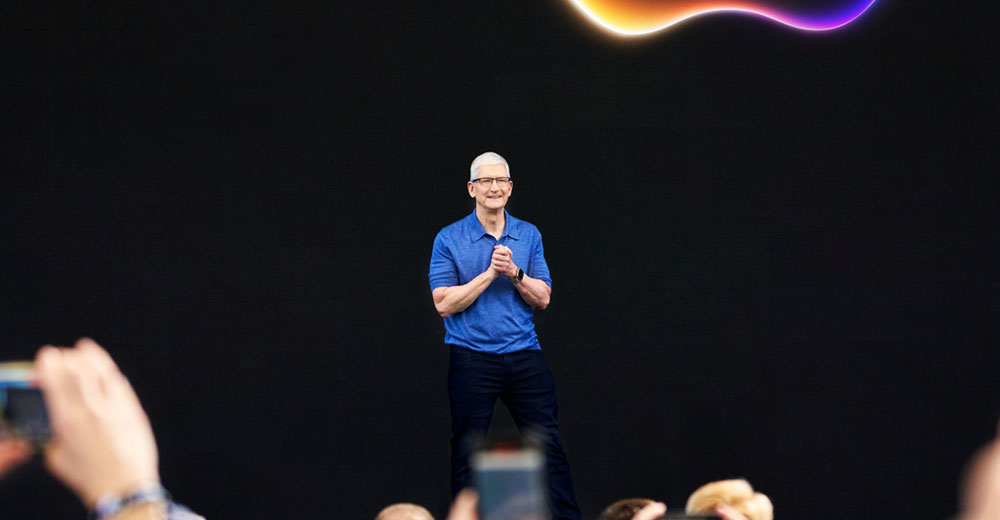Over the last several weeks, we’ve had Google I/O, which highlighted the rollout of Google’s Gemini AI engine for smartphones; Microsoft Build, which focused on its Copilot+ rollout for PCs; and Apple’s WWDC24 video, which showcased the rollout of AI on both PCs and smartphones.
Google’s launch was well executed, focused on attractive and interesting features, and was well received. Microsoft’s event was a bit of a mess; its most advanced capabilities didn’t work on any existing hardware, didn’t encompass most of the PC market, and ran up a ton of negative press on the Recall feature, which got buried under false concerns surrounding privacy.
Apple rolled out its AI — standing for “Apple Intelligence” in a cute spin — across most of its product line, nicely bridging PCs, tablets, and smartphones in a more compelling and comprehensive manner than either Google or Microsoft.
Let’s explore these AI product rollouts this week. Then, we’ll close with my Product of the Week: an advanced videoconferencing app that just embraced Apple’s Vision Pro to create an even more compelling solution for remote workers.
Apple’s Superior Approach to Event Keynotes
One of the biggest problems every company has today is how to market to users. Back when I was growing up, you had TV, radio, and a variety of publications, many focused on tech, in which you could advertise to get the word out. Today, those more traditional mediums are far less effective because people use the web, subscribe to ad-free video services, and learn how to use ad blockers or ignore web-based advertising.
One way that companies like Apple, Google, and Microsoft have to get the message to users is through keynotes at events like I/O, Build, and WWDC. But only Apple treats its keynote as a long-form product promotion vehicle. In contrast, Google and Microsoft tend to adhere to traditional formats, targeting primarily the local developer audience.
However, developers get interested in successful offerings, and keynotes don’t need to get into the weeds on products because there are generally breakout sessions that attendees can go to if they’re interested in the technical details. Most users are not interested, and I would argue that most attendees at these events are not focused on these details since each has their own area of interest, and often that area isn’t tied to the technical demonstration on stage.
Thus, Apple’s focus on making its WWDC keynote into a long-form ad and focusing on the users of its products rather than the developers in the audience is a good move. While Apple still lacks the incredible on-stage presence that Steve Jobs had, it comes closer than anyone else to driving excitement and controlling the message surrounding its announcements.
Challenges in Microsoft’s AI Rollout
One of the problems Microsoft faced with using ChatGPT as its AI source was that this AI platform has experienced quality problems. These issues negatively impacted Microsoft’s offerings, leading the WSJ to rank it last among five AI assistants they tested. However, the latest version of ChatGPT, the one Apple referenced, came in second. Apple effectively didn’t couple ChatGPT to its OS. Instead, Apple linked to it as a user-triggered option which should mean any related problems will reflect poorly on OpenAI, not Apple.
Elon Musk reportedly threatened to ban Apple smartphones for using ChatGPT. Given Tesla’s performance, I think people might be more willing to give up their Tesla than their iPhone, so I doubt this will end well for Tesla. Musk’s concern is unfounded anyway, as Apple appears to have separated ChatGPT from its OS, not embedded it.
Both Apple and Microsoft announced aggressive indexing apps. Microsoft even branded its app “Recall.” These apps do the same things, but Microsoft was criticized heavily — and largely falsely — for using this technology to spy on users, while Apple, which spent more effort explaining how the technology protected personal information, did not.
I expect this was partially due to Microsoft Build going first and generating negative press early enough for Apple to change its messaging so it didn’t face the same fate.
AI Coverage Comparison: Apple vs. Google and Microsoft
Google’s AI will function with Android smartphones, effectively blanketing most Android devices. Microsoft’s Copilot+, the most advanced AI solution, only initially works on Snapdragon X Elite laptops that ship tomorrow, effectively covering no hardware already in the market. Apple’s AI launch covered all of Apple’s lines. Though it doesn’t work natively on the Apple Watch, you can use the Watch to interface with it on your iPhone.
These are developer events, so while developers could use the Google solution, they’d need to use it on their smartphone, not their workstation. Microsoft developers who use workstation-class products don’t get access to Copilot+ even though their discrete GPUs have far more power than NPUs to run AI loads. The best guess is that Microsoft did this to preserve Azure revenues, but intentionally limiting product coverage is a mistake to protect secondary revenue streams.
Apple developers, in contrast, can use their AI on their smartphones, PCs (desktop/laptop), and tablets, giving Apple’s developers better support and coverage than Google’s or Microsoft’s developers.
Event Performance: Apple Leads the Pack
Apple has a history of strong launch events, although Microsoft has had better events a few times during Windows 95 and Xbox launches. To my recollection, Google has never had an event that eclipsed an Apple event, and Apple has even eclipsed CES a couple of times.
Apple’s production values have appeared to increase significantly since the launch of Apple TV, and it is at least likely that this service is having a significant positive impact on the quality of Apple’s launches and events.
Google has YouTube, which is bigger than Apple TV, but Google doesn’t seem to use the talent or learnings from that service to improve the quality of its events and keynotes. Microsoft also has its own studio, but it doesn’t have the same level of capability as Apple or Google, and they don’t seem to use it for events. As a result, the quality of Microsoft’s efforts is below that of Apple and Google.
Apple Sets the Standard
Google I/O came first, and it was a decent initial effort that captured the interest of its smartphone customers but mostly left out its PC customers on Chromebooks.
Microsoft’s convoluted Copilot+ launch didn’t seem to learn anything from Google’s earlier effort. It positioned Recall very poorly, so it had to delay the initial shipment of the final OS to OEMs.
Apple did it the best, encompassing almost all of its PC and smartphone products, positioning the applications well, and doing the best job of putting AI where its developers live, on their own hardware.
Apple tactically adjusted its messaging and responded to the Microsoft Recall blowback, maintaining high-quality presentations and reinforcing customer loyalty. This strategic approach made their keynote worth watching.
It’s not that Google or Microsoft couldn’t do as well, but neither company prioritizes this aspect enough to achieve the same level of excellence as Apple
At WWDC, Apple once again set the bar for how to announce important products, features, and services. The others could have done the same. Unfortunately, they chose not to.

Campfire With Support for Apple Vision Pro
I’m a fan of Campfire, a new VR-focused conferencing and collaboration platform. One of the reasons I like the app is that it uses the Meta Quest headsets, making spatial computing not only relatively affordable but also safer because those devices are wireless and are safer than using more expensive or wired headsets.
Last week, Campfire announced it would begin supporting Apple Vision Pro headsets in a couple of months, which are better and more expensive than the Quest offerings with much better passthrough. Improved passthrough allows the Vision Pro to be used longer with fewer side effects, like motion sickness, and makes it a better choice than Quest since it focuses on the professional market.

Campfire for Vision Pro will be available in the App Store this Fall. (Image Credit: Campfire)
This upgrade allows Campfire customers to enhance their experience with the Apple Vision Pro, further solidifying Campfire’s value as a spatial computing platform.
This move, well-timed with Apple’s WWDC, is an excellent enhancement to a service that could eventually evolve into the future of videoconferencing and a vital tool for companies to help keep employees off airplanes. (Every time I see a Boeing story, I regret we didn’t invest more in trains or use spatial computing more aggressively to avoid air travel in the first place.)
As a result of supporting the Apple Vision Pro, Campfire is my Product of the Week.























































